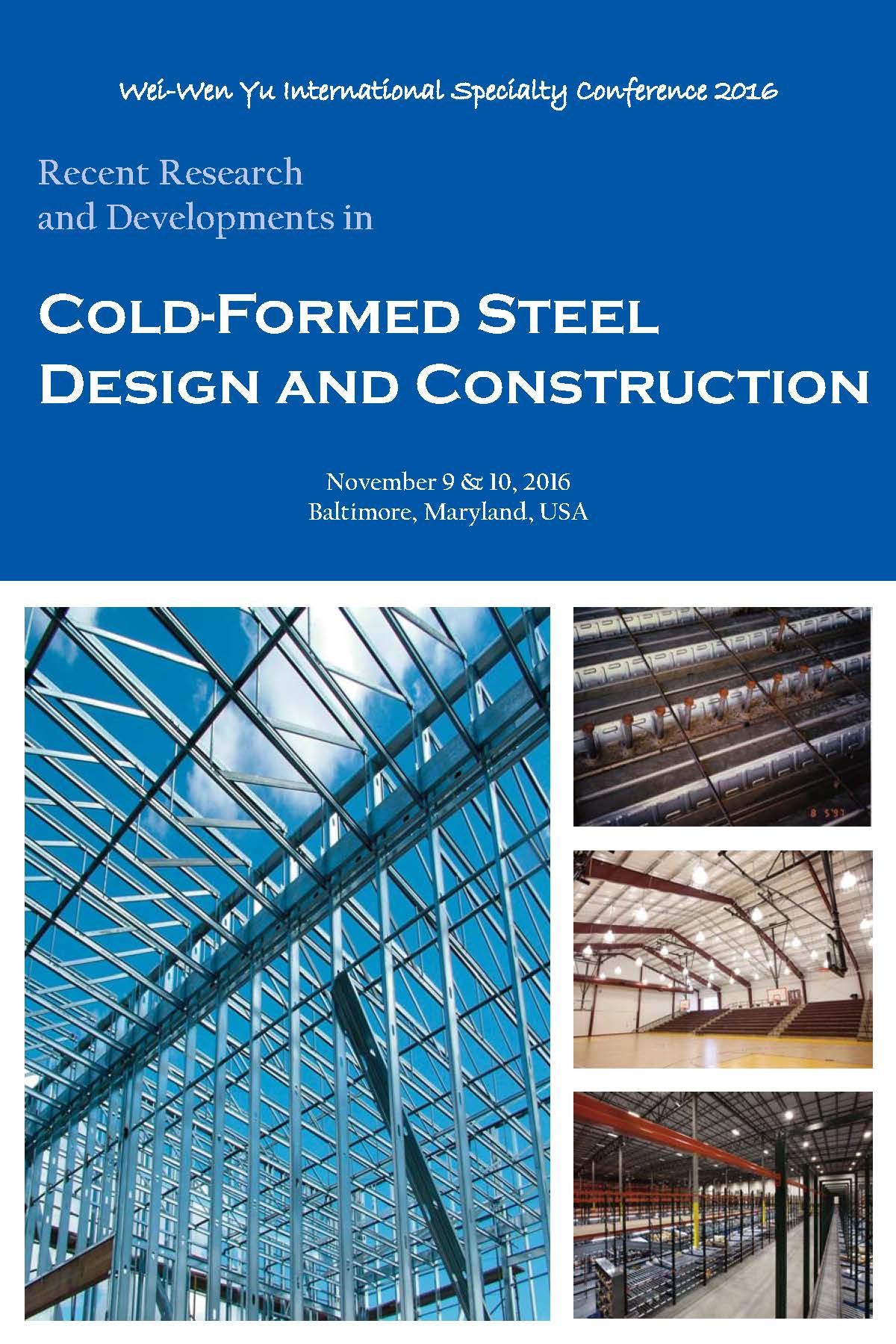Session Dates
09 Nov 2016
Abstract
This paper presents a research project aimed at advancing BIM for cold-formed steel (CFS) structures. The creation of the CFS family for Autodesk Revit is a handy solution for the lack of CFS members and information inside the Autodesk Revit libraries. Revit is one of the industry’s standard software for producing building information models. To overcome the disadvantages of not having CFS members in Revit, this research project focused on two phases to reach completion. Phase one consisted of developing a BIM library of industrial standard CFS members such as studs, tracks, and channels. Parameters were added to the members so that more information would be provided with them. These parameters include, but are not limited to, all the characteristics of CFS such as its gross, effective, and torsional properties. Phase two of the project consisted of using the developed CFS library to create light framed building models in Revit. This paper presents the results of creating and using this CFS library to produce CFS structures in combination with industry standard software.
Department(s)
Civil, Architectural and Environmental Engineering
Research Center/Lab(s)
Wei-Wen Yu Center for Cold-Formed Steel Structures
Meeting Name
International Specialty Conference on Cold-Formed Steel Structures 2016
Publisher
Missouri University of Science and Technology
Document Version
Final Version
Rights
© 2016 Missouri University of Science and Technology, All rights reserved.
Document Type
Article - Conference proceedings
File Type
text
Language
English
Recommended Citation
Johnson, Adam; Ramirez, Roni; and Yu, Cheng, "Advancing BIM for Cold-Formed Steel Structures" (2016). CCFSS Proceedings of International Specialty Conference on Cold-Formed Steel Structures (1971 - 2018). 5.
https://scholarsmine.mst.edu/isccss/23iccfss/session5/5
Advancing BIM for Cold-Formed Steel Structures
This paper presents a research project aimed at advancing BIM for cold-formed steel (CFS) structures. The creation of the CFS family for Autodesk Revit is a handy solution for the lack of CFS members and information inside the Autodesk Revit libraries. Revit is one of the industry’s standard software for producing building information models. To overcome the disadvantages of not having CFS members in Revit, this research project focused on two phases to reach completion. Phase one consisted of developing a BIM library of industrial standard CFS members such as studs, tracks, and channels. Parameters were added to the members so that more information would be provided with them. These parameters include, but are not limited to, all the characteristics of CFS such as its gross, effective, and torsional properties. Phase two of the project consisted of using the developed CFS library to create light framed building models in Revit. This paper presents the results of creating and using this CFS library to produce CFS structures in combination with industry standard software.



